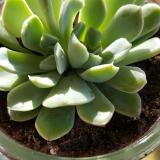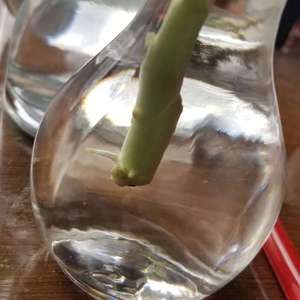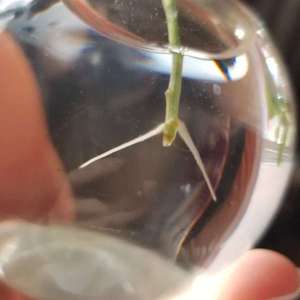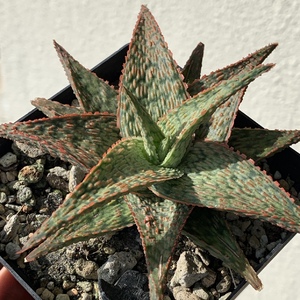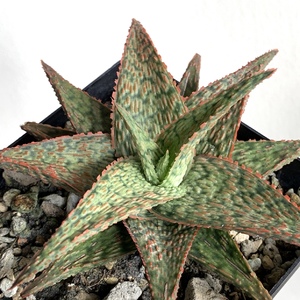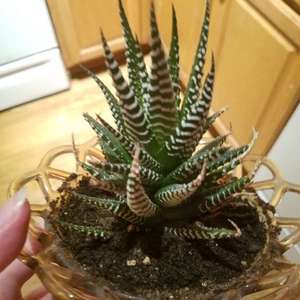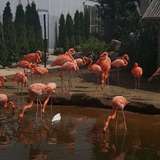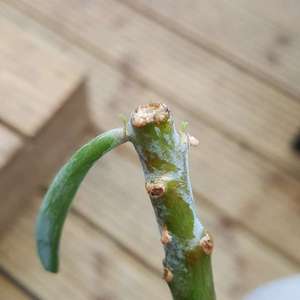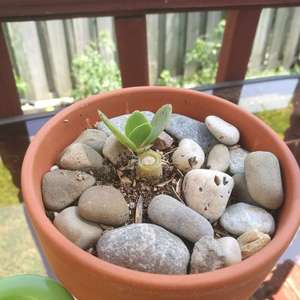文章
Miss Chen
2018年09月07日

Hosta plants (also known as plantain lilies) are herbaceous perennials that die down in the winter months and reemerge in the spring with new growth. There are a wide variety to choose from. Hostas are shade-loving plants that grow from bulbs (or tubers). Planting them is fairly easy.

Step 1
Purchase hosta bulbs from your local nursery or from online sources (see Resources below). Read all the packaging instructions before deciding where to put your hostas. Some varieties do require some sunshine during the day. Hosta plants with a blue hue generally require more shade than some of the other types. They can be planted at any time of year, but springtime is best, when new roots are being formed.
Step 2
Prepare the planting area soil. Although the hosta is an easy plant to grow and maintain, starting with the proper soil conditions will give your plant an extra boost. The soil should be well drained, with a pH of 5.5 to 6.5.
Step 3
Plant the hosta bulbs 12 inches or more apart and at the ground level where the shoots first emerge. Of course, the root end of the bulb should be placed down into the ground. Gently fill the area surrounding the bulb with soil and then pack lightly at ground level.

Step 4
Water your hosta bulbs often, approximately an inch of water per week. Always check with packaging directions, as some of larger-leafed varieties require more water. Fertilize at 6-week intervals through the spring and summer months with a 10-10-10 fertilizer.

Step 1
Purchase hosta bulbs from your local nursery or from online sources (see Resources below). Read all the packaging instructions before deciding where to put your hostas. Some varieties do require some sunshine during the day. Hosta plants with a blue hue generally require more shade than some of the other types. They can be planted at any time of year, but springtime is best, when new roots are being formed.
Step 2
Prepare the planting area soil. Although the hosta is an easy plant to grow and maintain, starting with the proper soil conditions will give your plant an extra boost. The soil should be well drained, with a pH of 5.5 to 6.5.
Step 3
Plant the hosta bulbs 12 inches or more apart and at the ground level where the shoots first emerge. Of course, the root end of the bulb should be placed down into the ground. Gently fill the area surrounding the bulb with soil and then pack lightly at ground level.

Step 4
Water your hosta bulbs often, approximately an inch of water per week. Always check with packaging directions, as some of larger-leafed varieties require more water. Fertilize at 6-week intervals through the spring and summer months with a 10-10-10 fertilizer.
0
0
文章
Miss Chen
2018年08月30日

Shasta daisies (Leucanthemum X superbum) are undemanding plants, but pruning encourages more flowers and stronger growth. These perennials grow in U.S. Department of Agriculture plant hardiness zones 5 through 9, and thrive in full sun and well-drained, alkaline soils. They benefit from pruning from mid-summer onward, and dividing plants also encourages healthy growth. Shasta daisies grow 2 to 3 feet tall and 1 1/2 to 2 feet wide, depending on the cultivar.

Fading Flowers
Pruning Shasta daisy blooms as they fade encourages more flowers. Shasta daisies can flower less after they set seed, but removing the flowers before seeds develop prompts the plants to bloom again. Sterilize your pruning shear blades by wiping them with rubbing alcohol, and prune Shasta daisies when their petals droop and turn brown. Hold the flower in one hand and feel down to the base of the flower stem with the other hand. Prune the stem at the base, and remove the other fading blooms in the same way. Sterilize your pruning shears again after use.
Summer Pruning
Shasta daises benefit from pruning when the earliest blooms start to fade. Check your Shasta daisies every week, and prune fading flowers until late summer or the end of blooming. If the soil surface is dry after pruning, water plants until the water begins to puddle on the ground, and feed them with a liquid 15-30-15 fertilizer, which encourages more blooms. Dilute the product at a rate of 1 tablespoon per 1 gallon of water and apply it every 14 days, or dilute and apply the product according to the instructions on the label.
Pruning Clumps
Severely pruning Shasta daisy clumps in early fall can prolong their lives. Shasta daisies are short-lived perennials, but removing their leaves and stems when flowering is over encourages strong growth, which helps plants store energy for winter. Prune Shasta daisies to 8 inches tall, using sterilized pruning shears, and put the trimmings on the compost pile or in the trash. If your plants are too tall and lanky, pinch out the tips of non-flowering stems with your thumb and forefinger in spring to encourage them to grow more compact and bushy.

Lifting and Dividing
Lift and divide Shasta daisies every two or three years to encourage strong, healthy growth and flowering. Dig up a Shasta daisy plant on a cool, cloudy day in winter or early spring by pushing a garden fork into the soil about 6 inches from the plant base and gently levering it up. Do this three or four times around the base until the root ball lifts out of the soil. Divide the plant into three sections by pushing a sharp spade down through the roots, and plant the sections 24 to 36 inches apart at their original growing depths. Water the plants thoroughly and continue to water them regularly so that the soil stays moist.

Fading Flowers
Pruning Shasta daisy blooms as they fade encourages more flowers. Shasta daisies can flower less after they set seed, but removing the flowers before seeds develop prompts the plants to bloom again. Sterilize your pruning shear blades by wiping them with rubbing alcohol, and prune Shasta daisies when their petals droop and turn brown. Hold the flower in one hand and feel down to the base of the flower stem with the other hand. Prune the stem at the base, and remove the other fading blooms in the same way. Sterilize your pruning shears again after use.
Summer Pruning
Shasta daises benefit from pruning when the earliest blooms start to fade. Check your Shasta daisies every week, and prune fading flowers until late summer or the end of blooming. If the soil surface is dry after pruning, water plants until the water begins to puddle on the ground, and feed them with a liquid 15-30-15 fertilizer, which encourages more blooms. Dilute the product at a rate of 1 tablespoon per 1 gallon of water and apply it every 14 days, or dilute and apply the product according to the instructions on the label.
Pruning Clumps
Severely pruning Shasta daisy clumps in early fall can prolong their lives. Shasta daisies are short-lived perennials, but removing their leaves and stems when flowering is over encourages strong growth, which helps plants store energy for winter. Prune Shasta daisies to 8 inches tall, using sterilized pruning shears, and put the trimmings on the compost pile or in the trash. If your plants are too tall and lanky, pinch out the tips of non-flowering stems with your thumb and forefinger in spring to encourage them to grow more compact and bushy.

Lifting and Dividing
Lift and divide Shasta daisies every two or three years to encourage strong, healthy growth and flowering. Dig up a Shasta daisy plant on a cool, cloudy day in winter or early spring by pushing a garden fork into the soil about 6 inches from the plant base and gently levering it up. Do this three or four times around the base until the root ball lifts out of the soil. Divide the plant into three sections by pushing a sharp spade down through the roots, and plant the sections 24 to 36 inches apart at their original growing depths. Water the plants thoroughly and continue to water them regularly so that the soil stays moist.
0
0
文章
Miss Chen
2018年08月20日

The giant white bird of paradise plant (Strelitzia nicolai) is a cousin to the more commonly seen orange and blue bird of paradise. The 10- to 12-inch white flower has a blue "tongue" and sits inside a purple bract.

Growth Rate
According to the University of Florida, the giant white bird of paradise is a moderate grower. It eventually reaches a height of 20 to 30 feet and a width of 6 to 10 feet, although smaller specimens are commonly seen. The plants will not flower until they are several years old.
Hardiness
Hardy in USDA plant zones 9b through 11, the giant white bird of paradise is slightly hardier than its orange cousin. It can also handle drought and salt, making it a good accent plant near pools or the ocean.

Growing Strelitzia Nicolai
Full sun and warm temperatures work best for giant white bird of paradise. If grown as container plants, they need to be brought inside when outdoor temperatures drop to 60 degrees Fahrenheit. They should be allowed to dry out between waterings. Plants need to be fertilized every two weeks in spring and weekly in summer for best flowering.

Growth Rate
According to the University of Florida, the giant white bird of paradise is a moderate grower. It eventually reaches a height of 20 to 30 feet and a width of 6 to 10 feet, although smaller specimens are commonly seen. The plants will not flower until they are several years old.
Hardiness
Hardy in USDA plant zones 9b through 11, the giant white bird of paradise is slightly hardier than its orange cousin. It can also handle drought and salt, making it a good accent plant near pools or the ocean.

Growing Strelitzia Nicolai
Full sun and warm temperatures work best for giant white bird of paradise. If grown as container plants, they need to be brought inside when outdoor temperatures drop to 60 degrees Fahrenheit. They should be allowed to dry out between waterings. Plants need to be fertilized every two weeks in spring and weekly in summer for best flowering.
0
0
文章
Miss Chen
2018年08月06日

Description: This perennial plant is a herbaceous vine that produces stems 2-4' long. The stems are usually glabrous, but are sometimes hairy where new growth occurs. The alternate leaves are 1-2' long and half as much across. They are often sagittate (arrowhead-shaped), but are variable and can assume other forms as well. Their margins are smooth and occasionally slightly ciliate. Long slender petioles connect the leaves with the stems. A slender flowering stalk may develop from the base of a petiole. This stalk occasionally branches and can produce 1-3 flowers. The corolla of a flower is funnelform in shape and up to 1" across; it is usually white, sometimes with light pink patterns. The 5 lobes of the corolla are very shallow and barely perceptible. Toward the throat of the corolla is a patch of yellow and the reproductive parts, consisting of 5 stamens and a pistil with a divided style. These reproductive parts are usually white, although the anthers may be pink or light purple in flowers with pink corollas. At the base of the flower, there are 5 green sepals that are much smaller than the corolla. Up to 1" below the base of a flower, there are a pair of small green bracts on the flowering stalk.
The blooming period can occur from late spring to early fall, and can span several months, even though individual flowers persist for only a single day, usually opening during the morning and closing by late afternoon. A hairless and well-rounded seed capsule about ¼" long replaces each flower; each 2-celled capsule contains 4 seeds. These dark seeds are 3-angled and oblong, but tapering somewhat at the ends. Each seed usually has 2 flat sides and 1 convex side; it is about 1/8" long. The root system consists of a slender taproot that branches frequently; it can extend 20' into the ground. Rhizomes are also produced in abundance, so that this plant often forms vegetative colonies.
Cultivation: Field Bindweed prefers full sunlight and mesic to dry conditions. It has considerable drought tolerance, and flourishes in poor soil that contains sand, gravel, or hardpan clay. It will also grow in moist fertile soil, but dislikes competition from taller plants. Eradication of this plant is difficult, as mechanical cultivation often spreads the rhizomes around, producing new plants. Because of the deep root system, it has been known to survive bulldozer operations. It can also persist in lawns, notwithstanding regular lawn-mowing. The application of broadleaf herbicides can be an effective control measure, if it is repeated as needed.

Range & Habitat: Field Bindweed is a common plant that has been reported from most counties in Illinois (see Distribution Map); it is native to Eurasia. This plant continues to spread and probably occurs in every county of the state. Habitats include lawns, gardens, fields, clay banks, areas along roadsides and railroads (including ballast), vacant lots, and miscellaneous waste areas. This plant occurs primarily in disturbed areas.
Faunal Associations: Mostly long-tongued bees visit the flowers for nectar, including bumblebees and little carpenter bees (Ceratina spp.). In addition, specialist bees that are attracted to funnelform flowers also visit the flowers for nectar, including Melitoma taurea (Mallow Bee) and Cemolobus ipomoeae (Morning Glory Bee). The adults and larvae of several tortoise beetles are known to feed destructively on the foliage of Field Bindweed, including Charidotella sexpunctata (Golden Tortoise Beetle), Chelymorpha cassidea (Argus Tortoise Beetle), Deloyala guttata (Mottled Tortoise Beetle), and Jonthonota nigripes (Black-legged Tortoise Beetle). Other beetles that feed on this plant include Chaetocnema confinis (Sweet Potato Flea Beetle) and Typophorus nigritus (Sweet Potato Leaf Beetle); see Clark et al. (2004). The larvae of a sawfly, Sphacophilus cellularis, feed on the leaves of bindweeds (Convolvulus spp.), as do the larvae of several moths, including Bedellia somnulentella (Morning Glory Leafminer), Spragueia leo (Common Spragueia), Emmelina monodactyla (Morning Glory Plume Moth), and Agrius cingulatus (Pink-spotted Hawk Moth); see Smith (2006), Cranshaw (2004), Covell (1984/2005), and Wagner (2005). Field Bindweed is not a preferred food source for mammalian herbivores because the foliage is mildly toxic. Furthermore, there have been reports of the rootstocks poisoning swine.
Photographic Location: Along a railroad in Urbana, Illinois. This plant is very common in the area.
Comments: Field Bindweed is an attractive plant while it is in flower, but it can be very aggressive and persistent. The flowers are smaller in size than Calystegia sepium (Hedge Bindweed) and Ipomoea pandurata (Wild Sweet Potato). Its leaves are sagittate, while the leaves of Ipomoea pandurata (Wild Sweet Potato) and Ipomoea lacunosa (Small White Morning Glory) are cordate.
The blooming period can occur from late spring to early fall, and can span several months, even though individual flowers persist for only a single day, usually opening during the morning and closing by late afternoon. A hairless and well-rounded seed capsule about ¼" long replaces each flower; each 2-celled capsule contains 4 seeds. These dark seeds are 3-angled and oblong, but tapering somewhat at the ends. Each seed usually has 2 flat sides and 1 convex side; it is about 1/8" long. The root system consists of a slender taproot that branches frequently; it can extend 20' into the ground. Rhizomes are also produced in abundance, so that this plant often forms vegetative colonies.
Cultivation: Field Bindweed prefers full sunlight and mesic to dry conditions. It has considerable drought tolerance, and flourishes in poor soil that contains sand, gravel, or hardpan clay. It will also grow in moist fertile soil, but dislikes competition from taller plants. Eradication of this plant is difficult, as mechanical cultivation often spreads the rhizomes around, producing new plants. Because of the deep root system, it has been known to survive bulldozer operations. It can also persist in lawns, notwithstanding regular lawn-mowing. The application of broadleaf herbicides can be an effective control measure, if it is repeated as needed.

Range & Habitat: Field Bindweed is a common plant that has been reported from most counties in Illinois (see Distribution Map); it is native to Eurasia. This plant continues to spread and probably occurs in every county of the state. Habitats include lawns, gardens, fields, clay banks, areas along roadsides and railroads (including ballast), vacant lots, and miscellaneous waste areas. This plant occurs primarily in disturbed areas.
Faunal Associations: Mostly long-tongued bees visit the flowers for nectar, including bumblebees and little carpenter bees (Ceratina spp.). In addition, specialist bees that are attracted to funnelform flowers also visit the flowers for nectar, including Melitoma taurea (Mallow Bee) and Cemolobus ipomoeae (Morning Glory Bee). The adults and larvae of several tortoise beetles are known to feed destructively on the foliage of Field Bindweed, including Charidotella sexpunctata (Golden Tortoise Beetle), Chelymorpha cassidea (Argus Tortoise Beetle), Deloyala guttata (Mottled Tortoise Beetle), and Jonthonota nigripes (Black-legged Tortoise Beetle). Other beetles that feed on this plant include Chaetocnema confinis (Sweet Potato Flea Beetle) and Typophorus nigritus (Sweet Potato Leaf Beetle); see Clark et al. (2004). The larvae of a sawfly, Sphacophilus cellularis, feed on the leaves of bindweeds (Convolvulus spp.), as do the larvae of several moths, including Bedellia somnulentella (Morning Glory Leafminer), Spragueia leo (Common Spragueia), Emmelina monodactyla (Morning Glory Plume Moth), and Agrius cingulatus (Pink-spotted Hawk Moth); see Smith (2006), Cranshaw (2004), Covell (1984/2005), and Wagner (2005). Field Bindweed is not a preferred food source for mammalian herbivores because the foliage is mildly toxic. Furthermore, there have been reports of the rootstocks poisoning swine.
Photographic Location: Along a railroad in Urbana, Illinois. This plant is very common in the area.
Comments: Field Bindweed is an attractive plant while it is in flower, but it can be very aggressive and persistent. The flowers are smaller in size than Calystegia sepium (Hedge Bindweed) and Ipomoea pandurata (Wild Sweet Potato). Its leaves are sagittate, while the leaves of Ipomoea pandurata (Wild Sweet Potato) and Ipomoea lacunosa (Small White Morning Glory) are cordate.
0
0





